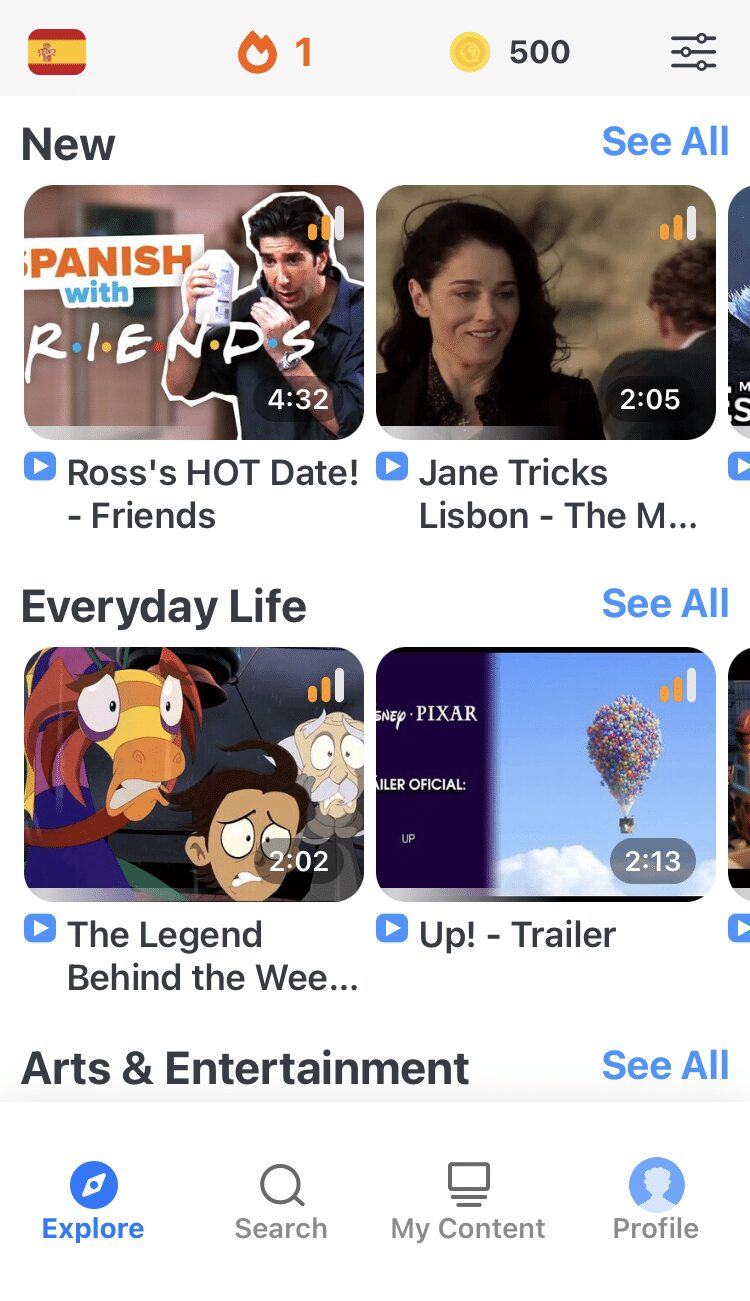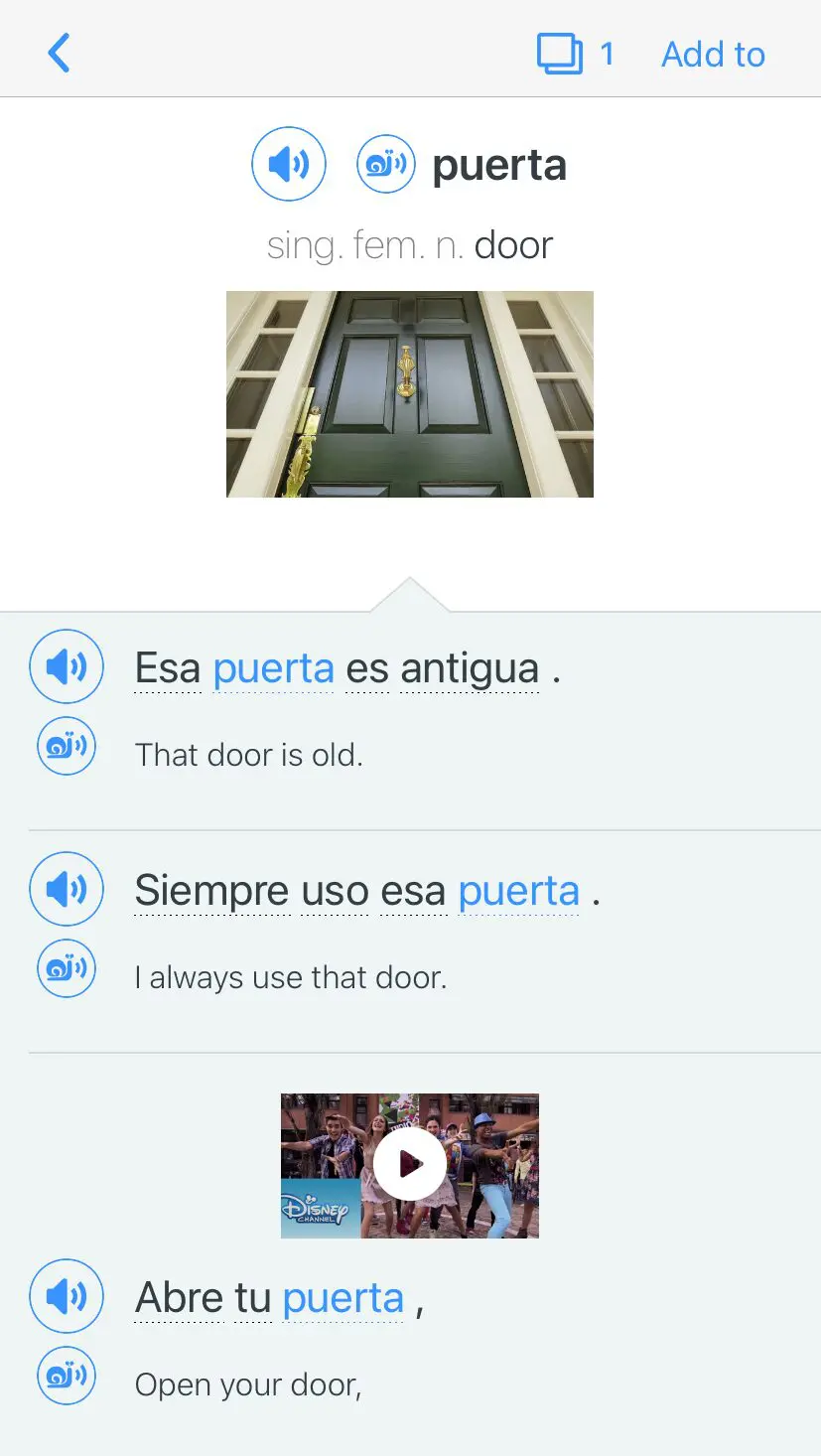Contents
- 1. Make technology work for you
- 2. Entertain yourself like a local
- 3. Keep up on news and current events
- 4. Find a conversation partner
- 5. Sign up for a conversation club
- 6. Label your home
- 7. Wine and dine
- 8. Do your errands in a different language
- 9. Volunteer in your target language
- 10. Make your job work for you
- 11. Record your thoughts in a new language
- 12. Set SMART goals
- 13. Watch language-oriented YouTube videos
- 14. Use language learning apps
- 15. Listen to music in a new language
- 16. Watch movies from your target language country
- 17. Play games in a new language
- 18. Attend local events
- 19. Organize gatherings at your place
- 20. Read books in another language
- 21. Have fun
- How Helpful is Immersion for Learning a Language?
- And One More Thing...
21 Ways to Immerse Yourself in a Language Without Going Abroad

Immersion is an important part of becoming fluent in a foreign language—and you can do this without leaving your country or even your home. After all, many people don’t have the time, money or desire to be an expat, but they’ve successfully learned languages. The key is to put yourself into situations where language learning is inevitable.
Here are 21 practical ways to immerse in another language regularly, from conversation clubs to cooking.
Download: This blog post is available as a convenient and portable PDF that you can take anywhere. Click here to get a copy. (Download)
1. Make technology work for you
You know that you aren’t living in France or China, but your computer doesn’t know that.
Immerse yourself and learn technical vocabulary by changing the digital language settings on your phone, camera, computer or TV.
In addition, you can change the settings in individual programs, such as your internet browser as well as on websites or apps you use frequently.
This simple change can make language learning a part of the activities you do most, and this helps to reinforce a sense of foreign language immersion and ongoing commitment to your language learning goals.
2. Entertain yourself like a local
We all need to take breaks, but why not use your breaks as opportunities to continue to learn?
Instead of lazing on the couch with an English-language TV show, find a show or video in the language you want to learn.
Soap operas can be a particularly good way to practice your language skills. They feature consistent characters and ongoing plot lines that stretch over a series of episodes.
This repetition can help improve your comprehension and ensure that you have a chance to understand what’s happening before the action moves elsewhere.
Ask native-speaking friends for suggestions about which shows are best, or do an online search for the most popular ones. If you have a TV channel that broadcasts in your target language, this is an ideal place to start.
There’s also the option of using a virtual immersion program for a bit more guidance and help locating material, such as FluentU.
FluentU takes authentic videos—like music videos, movie trailers, news and inspiring talks—and turns them into personalized language learning lessons.
You can try FluentU for free for 2 weeks. Check out the website or download the iOS app or Android app.
P.S. Click here to take advantage of our current sale! (Expires at the end of this month.)
Social media sites are another fun way to practice your language skills. Try looking things up or chatting with people in your target language using Pinterest, Reddit, Twitter, Facebook and other social media sites.
3. Keep up on news and current events

One of the best ways to sound like a native is to be aware of the hot topics within the community and use the same vocabulary locals use to talk about these things.
Newspapers showcase culture, and again libraries often stock periodicals and newspapers in foreign languages. Checking out sales, comparing home prices and finding the details on politicians and celebrities, all of this facilitates language immersion.
You can find more culturally relevant reading and viewing material in the library that comes along with the MosaLingua web app, which is available in Spanish, Italian, French, German and Portuguese.
Check out online news sources and ask native speakers what sites they use most, and browse the foreign language versions of international sources like the BBC and Google News.
4. Find a conversation partner
If you want to immerse yourself without leaving home, you need to find someone to talk with regularly. That’s where a conversation partner comes in.
It’s better if your conversation partner isn’t a teacher because your goal isn’t to drill new vocabulary or work through lessons in a book. It’s about having a friendly conversation with a native speaker.
That friendly conversation can help you practice what you’re learning at home and can also keep you motivated since you know you’ll need to use your language skills at least once every week or two.
To find a partner, start by talking to your friends and family members, and use Facebook to ask online friends for suggestions.
If this doesn’t work, post an announcement on a local community page, or try posting a note on the bulletin board at your library, school or coffee shop or use an online language exchange site such as HelloTalk or Tandem.
5. Sign up for a conversation club

Like a conversation partner, a club can give you opportunities to practice your target language and learn new vocabulary.
A club can introduce you to numerous other people interested in the language you’re studying, and these people may be able to provide you with information about new language learning opportunities or resources.
You also have the opportunity to hear many different voices and learn the ways different people use language. Plus, you can gain a lot by listening to more advanced speakers.
So, where to find clubs like these?
One of the easiest ways is to go looking for local foundations or cultural centers.
For Japanese, there’s the Japanese American Cultural and Community Center as well as the Japan Foundation.
Other examples include the National Hispanic Cultural Center, the Goethe Institut and the Korea Foundation.
Many libraries also offer conversation clubs, and so do some universities and colleges. Another option is to look for clubs through sites such as Meetup. If you can’t find a club in your community, you start one yourself.
6. Label your home
Want to get organized and improve your language skills at the same time? Start putting foreign-language labels on the things you use regularly.
Label your desk, window, coffee mug, bookshelf, anything you want. All it takes is masking tape and a pen (or if you like to be fancy, a label maker).
Seeing the word every time you use an item reinforces it in your mind and can help keep you motivated to learn more. It’s also an amazing way to bring language learning into your home and make it an everyday part of your life.
Just make sure you ask before labeling your roommate’s or spouse’s things!
The trick is sometimes mustering the motivation to create all the labels. Luckily, you can outsource your label-making for the most important words by using a Vocabulary Stickers set, which gives you well over 100 words to put on items you use and see every day around your home and office.
They’re durable yet removable, and—for languages that have genders—they’re even conveniently coded by grammatical gender, so you learn the gender of each word as you learn the word itself.
7. Wine and dine

Since food is an important element in all cultures around the world, it can be an excellent bridge to help you learn a foreign language.
Start with a cookbook
Find a book that will instruct you on how to prepare the cuisine of the country or culture where your target language is spoken. Cooking some dishes will help you better understand the daily life and culture of the people who speak the language you want to learn.
For more language practice, look up recipes and cooking shows online.
Following a recipe in a foreign language gives new meaning to the cooking and eating experience and can help you develop the vocabulary you need to talk about important dishes in your target language.
You can also find a restaurant that serves the cuisine of the people who speak your target language. Practice your pronunciation when you place your order, and engage the owners and waitstaff in friendly conversation.
8. Do your errands in a different language
You have to buy groceries, drop off your dry cleaning and grab a double mocha frappuccino (okay, maybe that last one’s optional). Why not get some language practice in at the same time?
Seek out a local immigrant community that speaks your target language and find the shops they use. You may be able to find an ethnic food market, convenience store, laundromat, dry cleaner, coffee shop, bakery and more.
Doing your errands at these places can open more opportunities to practice your language skills with the owners and the other customers. It can also be a way to meet new friends and conversation partners.
9. Volunteer in your target language

Look for ways to get involved in organizations that work with people in your community who speak your target language. Schools, nonprofits, libraries, places of worship and medical clinics might need your help. Refugee resettlement agencies may also be looking for help introducing new refugees to your city.
There are a wide range of things you might do in a volunteer position. You might lend a hand by watching kids while their parents take ESL classes, helping translate basic information, serving as an English conversation partner or driving people to medical appointments.
Look for postings on sites like Craigslist or VolunteerMatch, or see if your city has a volunteer match program of its own.
10. Make your job work for you
Most of your time is probably spent doing your “day job,” so this is an ideal place to look for additional opportunities to study the language you want to learn.
You can start practicing during your morning commute by playing music or listening to the news in your target language.
If you’re in search of a job, consider opportunities at restaurants, companies or shops where your target language is spoken.
If you’re lucky enough to already have a job where the language is spoken, never miss an opportunity to practice with your colleagues.
You can also improve your language skills by doing job-related research in your target language. When you need to look up information, try a search in your target language and see if you can understand some of the articles.
If your company offers funds for professional development, jump at the chance to apply for money to help you take a course or pay for a private tutor.
11. Record your thoughts in a new language

Write your way to a happier life and practice your language skills by journaling in your target language.
You can write short stories, record your impressions from the day or simply keep track of your language learning progress. The possibilities are endless.
For more of a structure, there’s also the five-minute journal format. When you wake up, take five minutes to answer:
- Three things you are most grateful for today.
- What will make today great?
- I am… (something positive, for example: happy, strong, fearless, intelligent, a supportive friend, etc.)
Then at night before you head to bed, answer:
- Three amazing things that happened today (and why).
- How could I have made today even better?
Feel free to adjust the questions as you wish.
12. Set SMART goals
It’s always a good idea to set a SMART goal when learning a language.
A SMART goal is Specific, Measurable, Attainable, Relevant and Timely, let’s explore this acronym:
- Specific is about setting specific goals with real deadlines. For example, “I want to learn a language” isn’t a specific goal. There are no details. What language? When? Instead, “I want to learn to speak Italian, and be conversant by this time next year” is specific.
Measurable goals define the way you plan to get to the overall end goal. For example, “I will study” isn’t a measurable goal, but “I will read two chapters a day in an Italian graded reader” is a measurable goal.
Attainable goals require a bit of thought as well as some sense of self. They’re personal in that only you can determine your ability to attain something. For example, “I will speak only Italian when I am at home. Additionally, I will not speak English when I speak with the Italian family down the street” is attainable.
Relevant goals aren’t “I’m doing this because I have spare time on my hands” but instead, “I’m doing this because I want to further my ability to travel and communicate in Italian-speaking countries.” A relevant goal establishes the “why?” of the process.
Timely means just that—set a time frame for yourself. No English during the hours of X to Y, or no English on Tuesdays, Thursdays and Fridays. Whatever works, commit to it.
13. Watch language-oriented YouTube videos
Now when you find yourself procrastinating or wasting time watching silly YouTube videos, you can switch over to something educational and language-oriented.
Innovative Language is a YouTube channel and language program that produces language learning pods to make the endeavor interesting and fun—and they’re so short it’s like taking a cultural jaunt.
Chinese, French, German, Spanish, Russian and thirty other languages are offered on the video sharing site. Each YouTube collection has hundreds of language videos. And if you like what you see there, you can opt to use their full language courses.
14. Use language learning apps
Language learning apps can provide valuable opportunities for immersion. They can make it easy, convenient and enjoyable for you to spend even just a few minutes a day absorbing your target language.
Some popular apps include Memrise, Duolingo and Babbel. Each one has its own approach, and its own strengths and weaknesses. You’ll just need to do a little exploring to see which one is best for you.
15. Listen to music in a new language

One lovely way to immerse yourself in a language is through music. It’s always a good idea to have foreign language music playing as often as possible. When you’re working or doing stuff around the house, play music.
The first step is just getting a solid playlist that you can pop on when you’re ready to listen. Popular music can be readily found for download or purchase via Amazon, and Spotify. Install them on your phone or tablet and take the tunes with you.
In the car or at home, set your radio to a foreign language station with a site like TuneIn. Listening to music directly from a country where the language is spoken lets your mind become accustomed to the nuances of the language and culture. You’ll pick up words, expressions and phrases without even realizing you’re learning.
Troll library racks for free music, check it out and bring it home to enjoy. And when the music’s playing, sing along—don’t be shy. Remember, it’s all about immersive learning, so immerse yourself in the lyrics even if you can’t understand them fully.
16. Watch movies from your target language country
One of the best ways to slip a bit of language and culture into your leisure time is through movies. Stop watching movies in English, and start watching them in a foreign language.
Whatever interests you—horror, drama, comedy, romance or anything else, there are sure to be films in that genre that will entertain. Bonus, while you’re being entertained you’re also immersed in the language!
If you don’t want to invest a cent, libraries stock them and they’re available to borrow for free.
When in doubt, The Vore offers free foreign language movies and television shows, and their catalog is diverse enough to satisfy most tastes.
But remember—turn off the subtitles.
17. Play games in a new language
When you’re working on learning a language, you can sneak the hard work right past your brain simply by playing educational games.
Duolingo language games are fast and fun. They’re great games for anytime, anywhere immersion. Portable and rewarding, they encourage learning with almost no effort at all.
If you’re a more serious gamer type, you can download the latest, coolest games in foreign languages quite easily. Then you can satisfy your video game cravings without sacrificing a single minute of language immersion time.
Don’t hesitate to make your own games, as well. Think flashcards, matching games, translated board games and even the silly rhyming games we played as kids. Only now, you’re all grown up and taking them to a new level—and a new language.
18. Attend local events

If your immersion was taking place in an exotic locale you’d probably attend cultural events. There’s nothing stopping you from looking for local events, things like dinners at cultural centers, concerts or dances.
Look for interest groups (think book clubs, fitness classes, cultural centers) where foreign language speakers congregate. Join a group! Socialize!
This may not be fully “at home,” but it’s in your hometown. And you can bring your experiences—and new friends—back home with you.
If you’re not living in an area that has these kinds of events, you can scout for videos of them online and immerse yourself through your computer screen.
19. Organize gatherings at your place
Once your home is filled with language opportunities, you might want to invite others in to share the learning. It doesn’t have to be real-life visiting, although I think that finding a learning partner to share the process with would be dynamite but, unfortunately, that’s not always possible.
A good friend may love you enough to take interest in your linguistic trinkets around the house, and might find it entertaining if you speak to them in your new language or serve them some new, authentic dishes you’ve learned to cook.
Skype and Zoom also give you the chance to speak face-to-face (virtually, anyhow!) with someone who speaks your target language. Who knows? You may find a friend!
20. Read books in another language

If you’re an introvert, the last two options are something you should push yourself to try every once in a while. After all, what’s the point of learning a language if you’re not going to interact with people?
That said, you’re welcome to retreat back into your at-home immersion paradise and be all alone afterwards.
You can pick up a good book in the immersion language and it’s okay if you don’t understand all the words initially, just keep at it.
Libraries are again your best friends. They carry reading material in several languages, so you’ll probably find something to hold your attention without spending any money at all.
21. Have fun
The best way to keep learning is to make it fun.
Find ways to do your hobbies while learning your target language. Do you like to read? See if your library has books and magazines in your target language. Do you like to dance? Take a class that teaches dances from a country or region where your target language is spoken.
You can also look for foreign language blogs and videos related to your hobbies. Try to connect with an international audience that also enjoys doing whatever it is that you like to do.
If video games are more your style, search for apps or online games in your target language.
You might also be able to find old-fashioned board games such as Scrabble in foreign languages. If you have friends or family members who are learning the same language, this can be a fun way to practice together.
How Helpful is Immersion for Learning a Language?
In a study about immersion by Georgetown University Medical Center, two groups of subjects were asked to study an artificial language. One group studied it in a formal classroom setting, while the other was trained through immersion.
After five months, changes in their brain were observed through electroencephalography (or EEG). The immersed group clearly displayed the full brain patterns of a native speaker.
This is mind-boggling, since 90% of committed language learners are still learning a language using the traditional classroom setting (and paying a premium price for it).
The researchers also concluded that for adult foreign language learners to become as fluent as native speakers, they must think like native speakers.
Ultimately, the best way to immerse yourself in a foreign language is to do whatever you would normally do—just in your target language.
Look for opportunities for foreign language immersion online and in your community so you can truly immerse yourself without leaving your hometown.
Download: This blog post is available as a convenient and portable PDF that you can take anywhere. Click here to get a copy. (Download)
And One More Thing...
If you want to learn a new language with real-world videos, let me tell you about my favorite language-learning tool–FluentU.
With FluentU, you can turn any subtitled YouTube or Netflix video into an interactive language lesson. That means you’re not just studying a language—you’re experiencing it exactly as native speakers use it.
No boring drills. No dry textbooks. Just the kind of content you’d actually watch anyway, but with tools to help you learn. My favorite feature lets you import YouTube videos directly into your FluentU account.
And that’s just the beginning! You can also check out our extensive video library packed with music videos, movie trailers, news clips and more!
Everything is organized by difficulty level, media type, and topic, so you can easily find videos that match your interests and skill level.
Personally, I love watching clips from movies and shows where there’s plenty of slang and expressions that will help you understand native speakers–and sound more like them!
As you watch, you’ll follow along with interactive, dual-language subtitles. Come across a new word or phrase? Just hover over it for an instant translation or click to hear its pronunciation, see example sentences, and more.
Once you’re done watching, FluentU reinforces what you’ve learned by showing you more examples of key words and phrases from the video—then quizzes you to check your understanding. You’ll even get extra practice with tricky words and reminders when it’s time to review.
We know what it takes to make real progress in a new language, and we’ve built FluentU to help you get there. You can use FluentU on your computer, tablet, or download our app from the App Store or Google Play.
Ready to start learning? Click here to take advantage of our current sale (it expires at the end of this month). And your first 2 weeks are free!












